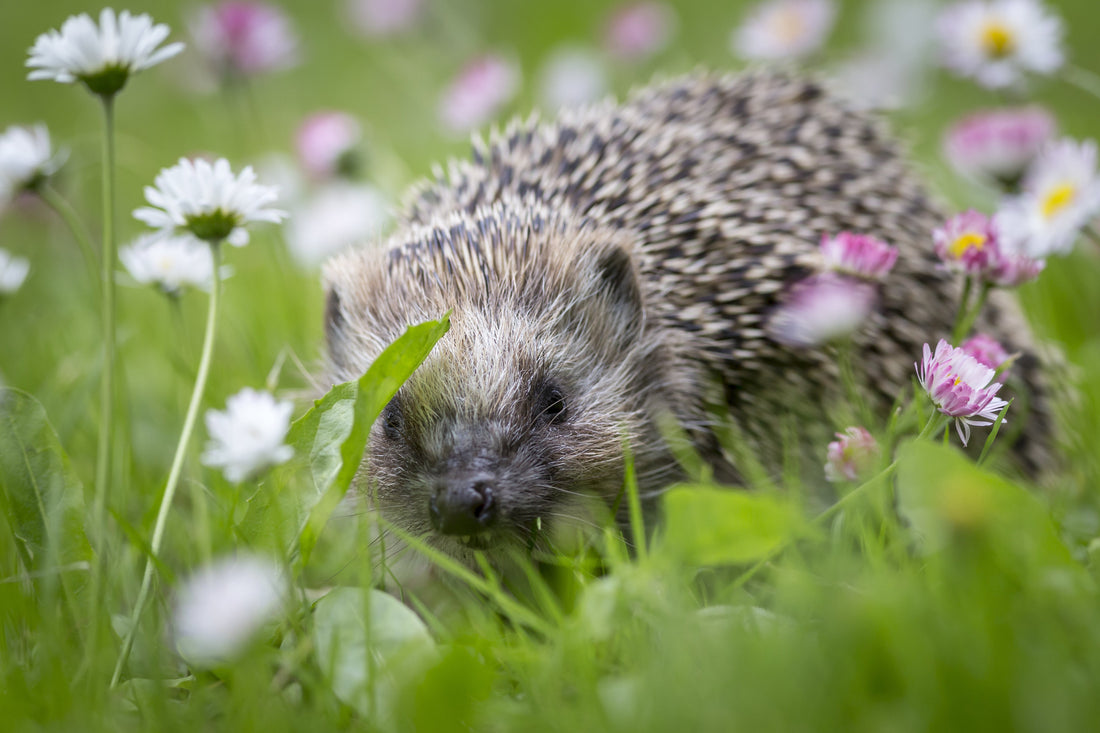Organic gardening
Organically cultivating a garden takes time and patience. Once the ecological balance in the biotope is achieved, it fills every gardener with pride.

Organic gardening
Organic gardening means pure nature – a diversity of species and variety in the garden, entirely in keeping with the natural processes of life. This means not just letting everything grow wild, but harnessing the forces of nature and restoring the organic cycle in your home garden paradise.
Find out your garden soil type
Knowing your own garden soil is very important for organic gardening, because incorrect cultivation or planting of the soil can prevent the garden from developing properly and the plants from growing.
Using two very simple and quick methods, you can find out what type of soil you have and how you should treat it accordingly.
First, you can "feel" your soil. Take some soil in your hand and rub it between your fingers. While sandy soil trickles through your fingers very easily, clay soil can be formed into small, playdough-like clumps. Humus-rich soil contains particularly high levels of nutrients and has a crumbly, loose consistency. To confirm your first impression, there is a second method you can use. Stir a handful of garden soil into a glass of water, let it stand for a few minutes, and see what happens. If you have sandy soil, the garden soil will quickly sink to the bottom, and the water will turn clear, almost transparent compared to the sediment. A sign of clayey garden soil is when the water turns earthy brown, becomes cloudy, and only a small amount of sediment is visible. Humus-rich garden soil would settle to the bottom just like sandy soil, but it would also color the water above it. In addition, a dark layer of humus would float on the water's surface.
How to start your organic garden
Humus-rich soil is best suited for organic gardening. Clay and sandy soils should be enriched with humus and compost for better results and to compensate for soil deficiencies, improve soil quality, and loosen it. After identifying and cultivating your soil, add compost. Next, spread mulch to create a protective layer over your soil.
Compost, mulch and co. - the gardener's gold
Fertile and healthy garden soil is essential. Gently loosening the soil, as well as mulching and composting, are among the most important maintenance tasks of every good organic gardener.
A garden without compost is hard to imagine. It revitalizes the soil, as garden waste is reintegrated into the garden's organic life cycle, and only the nutrients and minerals removed by the harvested crops need to be replenished. Mulching both protects and improves the soil (see our article on mulching). It acts as a protective layer against frost, wind erosion, and nutrient and heat loss. This means your garden is optimally cared for and prepared for the project. After that, it's quite easy, because from now on you can leave your beds alone, as the soil organisms take over. They increase the humus by slowly breaking down the compost and the mulch. They also ensure loose soil.
No more annoying digging necessary
Organic gardeners don't dig their beds, as this would destroy the humus layer and the finely tuned system of functioning that soil organisms have painstakingly built up. The soil is only gently loosened to aerate it and avoid damaging the natural soil stratification. Ideal gardening tools for organic gardening are the hoe and the digging fork.

Valuable tips and tricks
1) Many kitchen herbs act as natural insecticides. Plant a variety of herbs at regular intervals to keep unwanted guests away.
2) Vegetables as fence guards: Plant a row of vegetables around your organic garden. The excreted root secretions will repel and repel many pests.
3) Shrews and hedgehogs are an organic gardener's best friends. These little helpers devour as many snails, larvae, insects, and caterpillars as they weigh every day. Ladybugs and earwigs feed on aphids in large numbers, so you'll be delighted to see them in your garden paradise. Even earthworms help out. They loosen the soil and are a valuable source of fertilizer.
To good neighbors!
Mixed planting contributes to the well-being of plants. Different, compatible, and mutually beneficial species grow peacefully side by side. Such plantings can significantly increase yields, promote growth, and reduce disease infestation because the plants protect each other.
Examples of good, beneficial combinations include strawberries, kohlrabi, lettuce and garlic; carrots, leeks, onions and marigolds; cucumbers, dill and peas; a combination of tomatoes, celery and cabbage; or bush beans, beets and savory. There are a few exceptions that should not be planted together. Remember these, and then nothing can go wrong.
Poor neighbors include peas or onions with beans, or cabbage with onions, strawberries, and mustard greens. Tomatoes shouldn't be planted with fennel, potatoes, or peas, and potatoes shouldn't be planted directly next to sunflowers or celery.
To avoid tiring and depleting your soil with monocultures, you should plan for crop rotation. This means changing plant species with different soil requirements for the same location each year.
TEXT: Swantje Holtmann








































































































